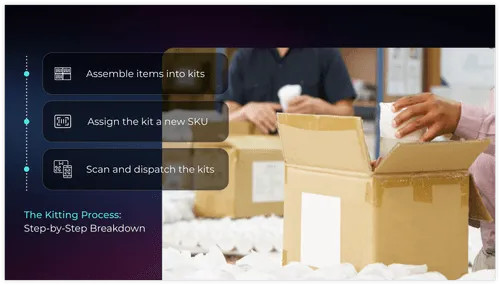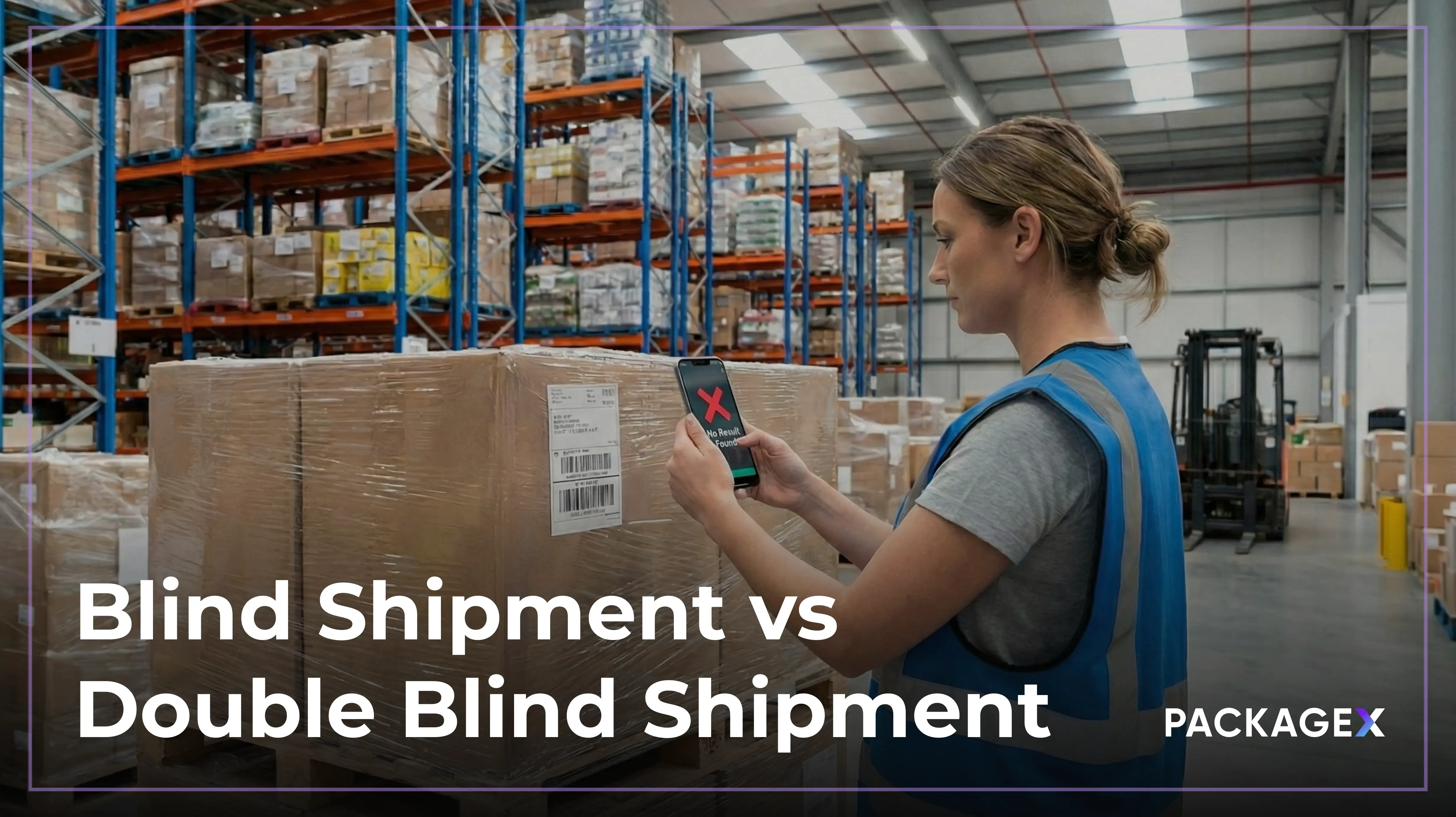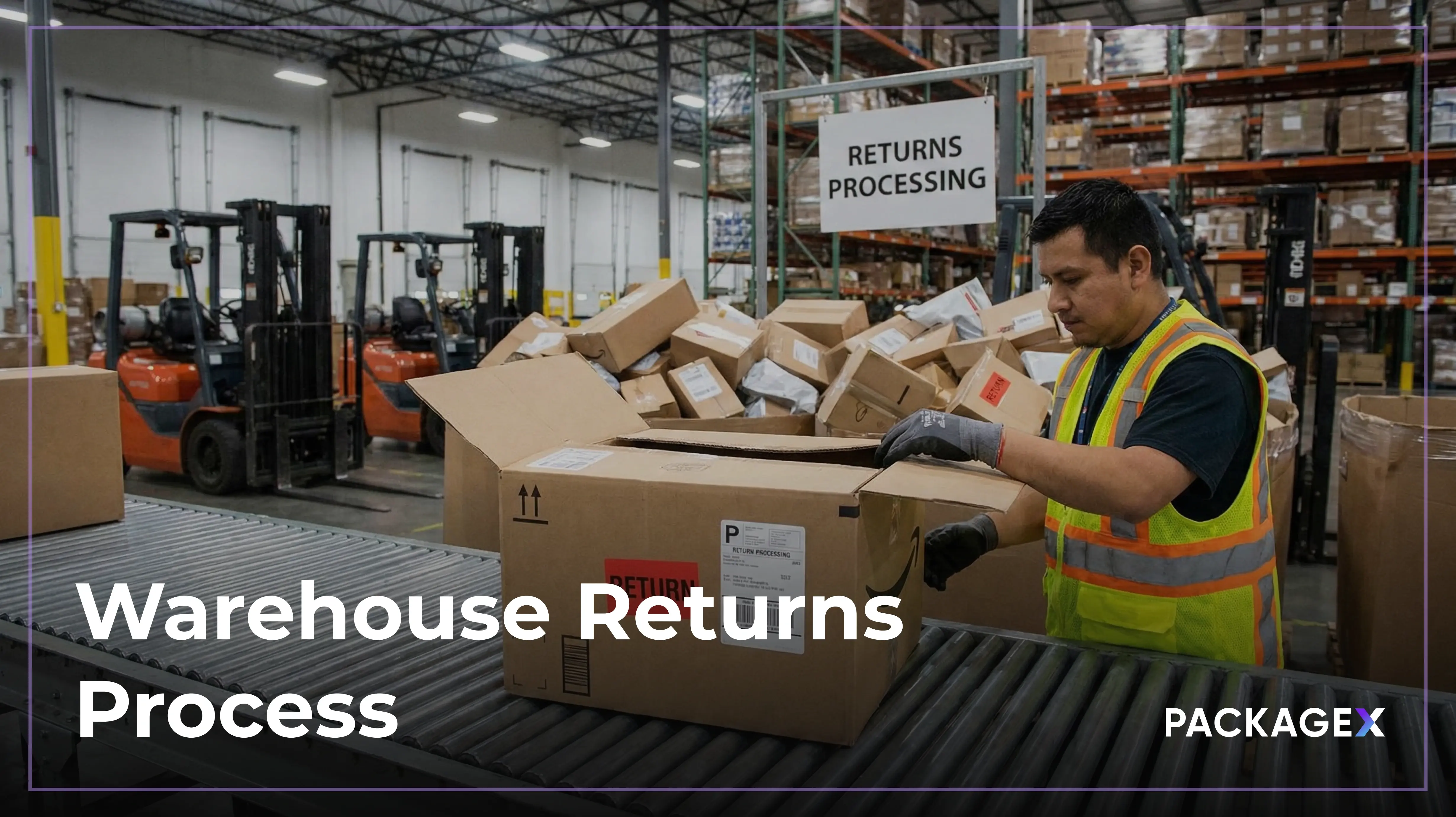In the fast-paced logistics and inventory management world, businesses constantly seek ways to streamline operations, reduce costs, and enhance efficiency. One powerful strategy that has gained significant traction is kitting. But what exactly is kitting, and how can it revolutionize logistics processes?
At its core, kitting involves grouping individual items into ready-to-ship kits, making the picking, packing, and shipping processes more efficient. Whether it's the electronics industry, healthcare, or ecommerce, kitting can offer substantial benefits that directly impact the bottom line.
In this blog, the concept of kitting will be thoroughly examined, with a breakdown of its process and an exploration of its numerous benefits.
What is Kitting?
Kitting is a warehousing and inventory management technique where different but related products are paired together to create a new SKU that contains multiple items but is sold as a single unit. It helps retailers, manufacturers, and ecommerce business owners increase average order value and sell slow-moving items while reducing picking and packing costs. Warehouse kitting has become essential to omnichannel fulfillment despite being a value-added service. Instead of handling and managing each component separately, businesses can streamline their operations by dealing with pre-assembled kits ready for dispatch.
The Kitting Process: Step-by-Step Breakdown
Kitting is a straightforward process that requires only a few steps mentioned below:
Identify and source items that will go into the kit
The first step is to determine the items that will be paired in a kit and ensure their availability in the required quantities. The items can be paired together based on mutual quality, such as product use, color, or theme.
Assemble items into kits
The selected items are paired and assembled into kits either with the help of specialized equipment or manual labor. Businesses can assemble the kits themselves or outsource the process to private kitting companies that ship and label the kits. All the components of the kit are relocated in the warehouse so that they can be picked and bundled efficiently by the warehouse staff or teams.
Assign the kit a new SKU
After assembling the items, the kits are assigned a unique SKU in the inventory system. This allows easy identification and tracking, helping businesses get better insights into sales and inventory. Though it contains multiple products, the bundle is added to the system as a single SKU.
Scan and dispatch the kits
The last step is to sell and ship the kits as a single unit and watch the profits or revenue increase.
Benefits of Warehouse Kitting
Kitting offers numerous benefits to 3PL and ecommerce businesses, including improved efficiency, enhanced accuracy, cost savings, and high customer satisfaction.
Improved Efficiency
The picking and packing process becomes much faster and more efficient as the items are pre-assembled into kits. Warehouse staff pick a single kit instead of multiple items, reducing the time needed to fulfill orders and increasing productivity.
Enhanced Accuracy
Pre-assembled kits include all the necessary components, reducing the chance of picking errors or missing items in the order. This leads to fewer returns or customer complaints. Kitting brings consistency and accuracy to order fulfillment.
Cost Savings
Kitting reduces labor costs per order, as workers spend less time fulfilling each order. It also leads to significant savings on shipping costs because shipping multiple products in a single package costs less than shipping each item separately.
Better Warehouse Space Utilization
Kitting saves a lot of space in the warehouse because kits are stored compactly compared to individual items. It improves organization and maximizes the warehouse space.
Efficient Inventory Management
When products are grouped into kits, inventory management becomes easier. Instead of tracking individual components, businesses can check the availability of complete kits.
Faster Delivery Times
The efficiency gained by kitting in picking and packing translates into faster order processing and, ultimately, quicker delivery. Shipping multiple products individually takes time. However, by kitting these products, each step in order fulfillment becomes quicker, and customers get their orders faster.
Improved Customer Satisfaction
Businesses can enhance their customers’ shopping experience using the warehouse kitting technique. Delivering a complete and well-organized kit enhances customer satisfaction with the purchase.
Increased Product Sales
Product kitting is an effective strategy for promoting items in lower demand. By bundling these products with more popular items, businesses can reduce the risk of dead stock and improve the inventory turnover ratio. This approach not only aids in inventory reduction but also encourages customers to make larger purchases, as they perceive added value in the bundled offerings. Additionally, kitting is an excellent option for creating appealing subscription boxes, further boosting sales and customer engagement.
Difference Between Kitting and Bundling
Both kitting and bundling involve grouping multiple products, but they serve different purposes and are used in distinct ways in logistics and sales.
Kitting is primarily used for operational efficiency in the logistics and manufacturing processes. It simplifies and speeds up the assembly, packaging, and shipping processes. Bundling is a marketing strategy aimed at increasing sales and providing value to customers. It involves grouping related or complementary products to encourage larger purchases.
Kits are physically assembled into a single unit, whereas bundles are grouped together for sale but typically remain as separate items.
Understanding these differences can help businesses choose the right strategy to meet their specific operational or marketing goals.
How Can Inventory Management Software Help?
Inventory management software plays a crucial role in optimizing the kitting process. Here are several ways this software can assist:
Automated Inventory Tracking
Real-Time Updates: This feature provides real-time updates on inventory levels for individual components and completed kits, ensuring accurate and up-to-date information.
Automatic Reordering: Automatically generates reorder alerts for components when stock levels fall below a predefined threshold, preventing stockouts and delays in the kitting process.
Efficient Kitting Operations
Streamlined Assembly: Automates the assembly process by generating kits based on predefined rules and inventory availability, reducing manual errors and saving time.
Batch Processing: Allows for the batch processing of kits, enabling the assembly of multiple kits simultaneously to meet large order demands quickly.
Improved Order Fulfillment
Accurate Kit Preparation: Ensures all necessary components are available and correctly assembled into kits, reducing the risk of errors and incomplete orders.
Faster Shipping: Speeds up the fulfillment process by having pre-assembled kits ready to ship, leading to quicker delivery times and improved customer satisfaction.
Cost Savings
Optimized Inventory Levels: Helps maintain optimal inventory levels, reducing carrying costs and minimizing the risk of overstocking or stockouts.
Reduced Labor Costs: Automates many aspects of the kitting process, reducing the need for manual labor and associated costs.
Integration with Other Systems
Seamless Integration: It integrates with other systems, such as ERP, WMS, and ecommerce platforms, providing a unified solution for inventory and order management.
Data Synchronization: Ensures data synchronization across all systems, leading to consistent and accurate information throughout the supply chain.
Enhanced Visibility and Control
Comprehensive Tracking: Tracks the movement of individual components and assembled kits throughout the supply chain, providing complete visibility and control.
Detailed Reporting: Generates detailed reports on inventory levels, kit assembly status, and component usage, helping managers make informed decisions.
How Can PackageX Optimize Kitting?
PackageX, with its robust Inventory Management System (IMS) and advanced capabilities, offers significant enhancements to the kitting process. Here's how PackageX can streamline and optimize kitting operations:
- Real-Time Inventory Levels: PackageX automatically updates inventory levels in the IMS via API integration, ensuring real-time tracking of individual components and assembled kits.
- Accurate Component Matching: By matching RMA and SKU with the WMS and IMS, PackageX ensures that all components required for kitting are accurately accounted for and available.
- PX <> WMS Integration: Seamlessly integrates with the WMS to direct the workforce on where to place new items in the warehouse, ensuring that kit components are easily accessible.
- Mobile Application Support: The PX mobile application allows the workforce to efficiently scan BOLs and count incoming boxes, ensuring accurate quantities and facilitating smooth assembly of kits.
- Label Creation and Serializing: PackageX supports label creation and serializing during kitting, ensuring each kit is properly labeled and tracked.
- Customizable Kitting Workflows: Offers customizable workflows for kitting, allowing businesses to set up processes that match their specific operational needs and preferences.
- Enriched Asset Records: Enriches asset records with detailed documentation, ownership information, maintenance schedules, and more, providing a comprehensive view of each kit and its components.
- History and Comments: Maintains a history of kitting operations and allows for comments, ensuring transparency and accountability throughout the process.
{{returns-webinar}}
Frequently Asked Questions About Kitting
What is a kit in Inventory?
A kit in inventory refers to a pre-assembled package of multiple individual items or components grouped together to form a single unit. Kits are created to simplify and expedite the picking, packing, and shipping processes in inventory management.
What is private label kitting?
Private label kitting is a process where individual components or products are assembled into kits under a retailer’s own brand name rather than the manufacturer’s brand. The retailer then sells these kits as exclusive offerings, providing a unique product that differentiates them in the marketplace. This strategy allows retailers to offer customized and branded solutions that cater to their target market.
Can kitting be customized for specific orders?
Yes, kitting can be customized for specific orders. Businesses can create custom kits based on individual customer requirements, offering personalized and flexible solutions.




